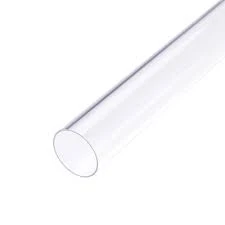Aug . 06, 2024 14:09 Back to list
Exploring the Benefits and Applications of Polyethylene Pipe Fittings in Modern Infrastructure Projects
Understanding Polyethylene Pipe Fittings Versatility and Applications
Polyethylene pipe fittings are essential components widely used in various piping systems, particularly in water, gas, and industrial applications. Made from high-density polyethylene (HDPE) or low-density polyethylene (LDPE), these fittings possess unique properties that make them suitable for a multitude of applications. This article explores the features, benefits, and various uses of polyethylene pipe fittings, highlighting why they are a preferred choice in many industries.
Key Features of Polyethylene Pipe Fittings
1. Durability One of the primary advantages of polyethylene fittings is their unmatched durability. They are resistant to corrosion, chemicals, and ultraviolet (UV) radiation, which means they have a significantly longer lifespan compared to fittings made from other materials like metal or PVC. This durability is crucial in environments where exposure to aggressive substances is common.
2. Lightweight Polyethylene fittings are considerably lighter than traditional materials, making them easier to handle and install. This lightweight nature not only reduces transportation costs but also minimizes the labor required during installation, as heavy lifting and extensive support frameworks are not necessary.
3. Flexibility The inherent flexibility of polyethylene allows it to withstand stresses from ground movement, making it an ideal choice for buried applications. This flexibility also enables easier installation around obstacles without compromising the integrity of the piping system.
4. Fusion Capabilities Polyethylene piping systems can be fused together using heat fusion methods, creating a seamless transition between pipes and fittings. This method ensures a leak-free connection, significantly reducing the risk of material loss and improving overall system reliability.
Applications of Polyethylene Pipe Fittings
polyethylene pipe fittings

1. Water Supply Systems Polyethylene fittings are commonly used in potable water supply systems due to their non-toxic nature and resistance to bacteria. They can also endure the pressure of municipal water systems, ensuring a reliable supply of clean drinking water.
2. Irrigation In agriculture, polyethylene fittings play a crucial role in modern irrigation systems. Their resistance to corrosion and chemicals makes them ideal for conveying various types of liquids, including fertilizers and pesticides, without degrading over time.
3. Gas Distribution Polyethylene is widely used in natural gas distribution systems. Its toughness and chemical resistance make it suitable for transporting gas over long distances. Additionally, the lightweight nature of polyethylene reduces the cost of installation on gas pipelines, often eliminating the need for extensive excavation.
4. Sewage and Drainage Systems The versatility of polyethylene fittings extends to wastewater management. They can be used in sewage systems and stormwater drainage, providing reliable connections that can withstand harsh environmental conditions.
5. Industrial Applications Various industries, including telecommunications and chemical processing, utilize polyethylene fittings. Their ability to handle different pressures and temperatures makes them suitable for pipes that transport hazardous materials.
Conclusion
Polyethylene pipe fittings represent a significant advancement in piping technology, offering numerous benefits, including durability, flexibility, and ease of installation. Their wide range of applications—from water supply and irrigation to gas distribution and industrial use—demonstrates their versatility and reliability. As infrastructure requirements continue to evolve, the role of polyethylene fittings is expected to become even more critical, reinforcing their position as a fundamental component in modern piping systems. With ongoing advancements in material technology, polyethylene fittings remain at the forefront of efficient and sustainable piping solutions.
-
High-Quality PPR Pipes and Fittings Durable ERA PPR & PVC PPR Solutions
NewsJul.08,2025
-
Black HDPE Cutting Board - Durable, Non-Porous & Food Safe HDPE Plastic Cutting Board
NewsJul.08,2025
-
High-Quality CPVC Panel Durable HDPE & PVC Panels Supplier
NewsJul.08,2025
-
Double PE Welding Rod Supplier - High Strength, Durable & Versatile Welding Solutions
NewsJul.07,2025
-
High-Quality PVC-O Pipe Supplier Durable 75mm PVC Pipe & Connections Leading PVC Pipe Company
NewsJul.07,2025
-
HDPE Drainage Pipe Supplier – Durable & Corrosion-Resistant Solutions
NewsJul.06,2025

